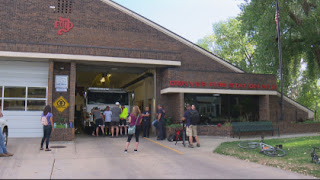I've been told there are more "smart" phones than people in the US. I am inclined to believe that. I'm even more inclined to believe, however, that there are more "smart" phones than smart people in some places.
In the Netherlands, on the other hand, there are more bicycles than people. But it may well be that, as in other Western countries, the "smart" phone-to-person ratio is catching up to that of the United States.
That is probably the reason why, according to Dutch News, electronic devices played a role in all bike accidents involving people under the age of 25 in 2015. One of those accidents took the life of teenaged Thomas Kulkens, who was hit by a car while looking at his phone.
The tragedy led his father, Michael, to become an outspoken advocate for banning cell phone use on bicycles. His efforts, and those of others, may well bear fruit: the Dutch government is now considering such a ban. If implemented, it could go into effect in the summer of 2019.
While Kulkens has been advocating in memory of his child, he says, "The woman who killed my son is absolutely blameless" and, "her life has been turned upside down as well."
Critics, though, point out that such a ban would be as difficult to enforce as the one against drivers using cell phones. Also, they say, there is disagreement over just how much of a role devices play in accident rates.
But nearly everyone agrees that people, especially the young, are spending more time looking at their screens while walking, pedaling, driving or doing any number of other things. Also, (again, as in other countries) electric bike use is on the rise, which means that bike traffic has become faster as bike lanes and paths have become more crowded.
In the Netherlands, on the other hand, there are more bicycles than people. But it may well be that, as in other Western countries, the "smart" phone-to-person ratio is catching up to that of the United States.
That is probably the reason why, according to Dutch News, electronic devices played a role in all bike accidents involving people under the age of 25 in 2015. One of those accidents took the life of teenaged Thomas Kulkens, who was hit by a car while looking at his phone.
The tragedy led his father, Michael, to become an outspoken advocate for banning cell phone use on bicycles. His efforts, and those of others, may well bear fruit: the Dutch government is now considering such a ban. If implemented, it could go into effect in the summer of 2019.
While Kulkens has been advocating in memory of his child, he says, "The woman who killed my son is absolutely blameless" and, "her life has been turned upside down as well."
Critics, though, point out that such a ban would be as difficult to enforce as the one against drivers using cell phones. Also, they say, there is disagreement over just how much of a role devices play in accident rates.
But nearly everyone agrees that people, especially the young, are spending more time looking at their screens while walking, pedaling, driving or doing any number of other things. Also, (again, as in other countries) electric bike use is on the rise, which means that bike traffic has become faster as bike lanes and paths have become more crowded.


























